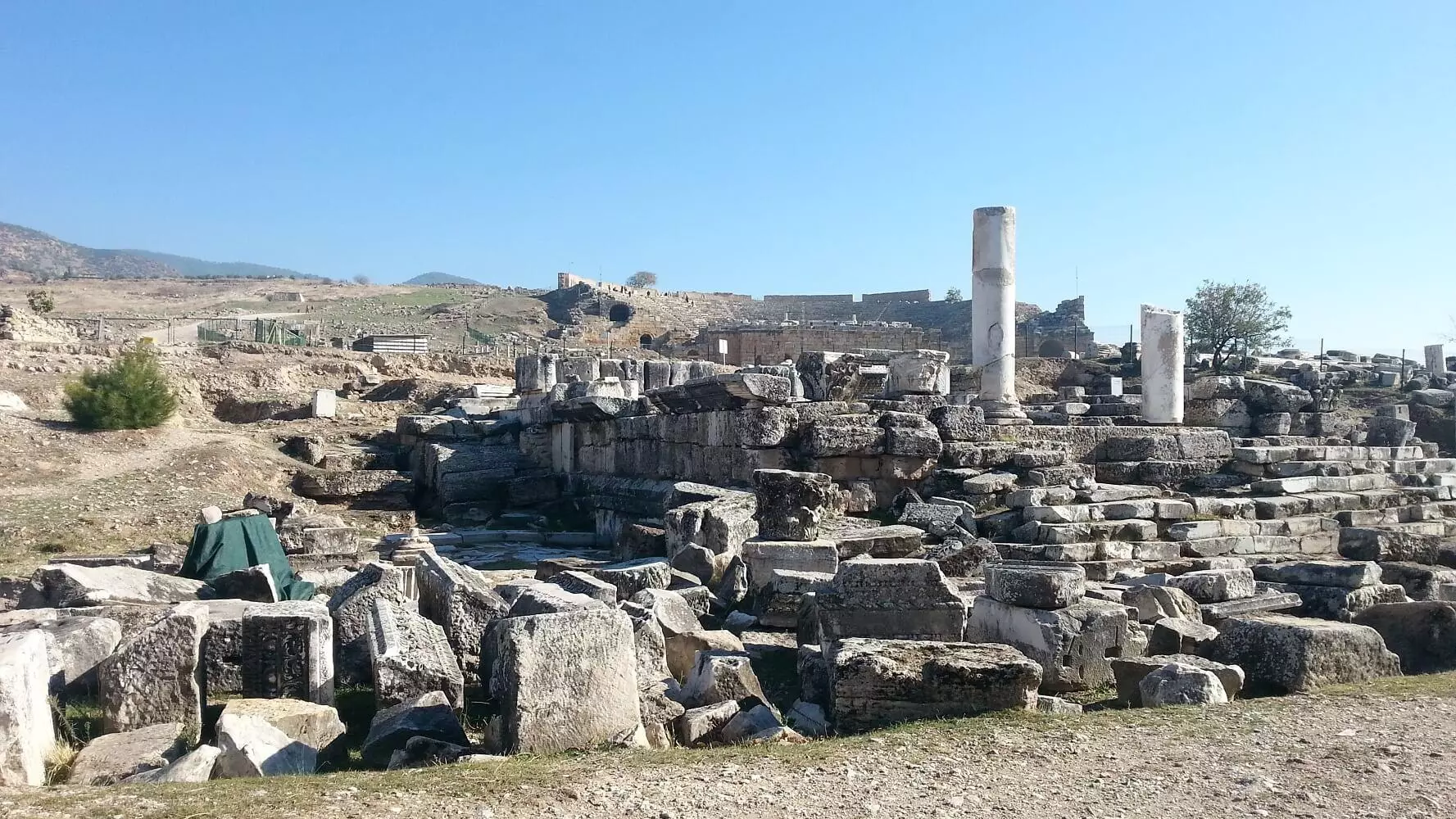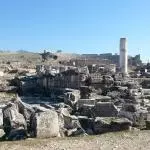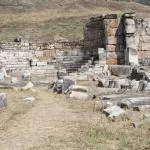The Temple of Apollon was built on Plutonion, known as the old and religious cave. It is the oldest religious center of the indigenous people. In this region, Apollo also met with Kybele the mother goddess. The old sources declare that the Mother Goddess Kybele priest descended into this cave and was not affected by the poison gas.
Ruins belonging to the superstructure in the Temple of Apollo from 3rd century AD and the bases dated as far as the Late Hellenistic Period. The 70-meter-long Temple, known for its marble entrance steps, is located in the sanctuary surrounded by the temenos wall. The Temenos wall reclined on the port, which is partly dug in the south, west, and north. The marbled ports have fluted half columns, astragal and pearl rows, and egg rows on echinna.
The Sacred Temple of Apollo in Hierapolis is dated to a later period. But in the museum, there are two ionic corinthian head and some architectural pieces dated to the 1st century AD. It points to the existence of a temple based on earlier ages. There are also podium with marble plates and wiped cornices, other than the marble staircase that is left over from the Temple of Apollo. The front is decorated with two columns located between the two antes. Its date can be made thanks to the inscribed blocks used in the ante and headers, cella wall and floor. On one of them is read a letter of Apollo prophecy. According to the temple ornament, it is dated to 3rd centuries AD.
There is an area filled with stairs behind the temple, pieces from the Temple of Apollo, column bodies, architrave pieces, heads, and bases. In this structure, a female sculpture with a curled garment was found, in the 4th century BC, renewing the sculpture schemes. According to the inscription, it was devoted to Zeuxis’s daughter, Apphia, to the gods of the empire and Demos.



